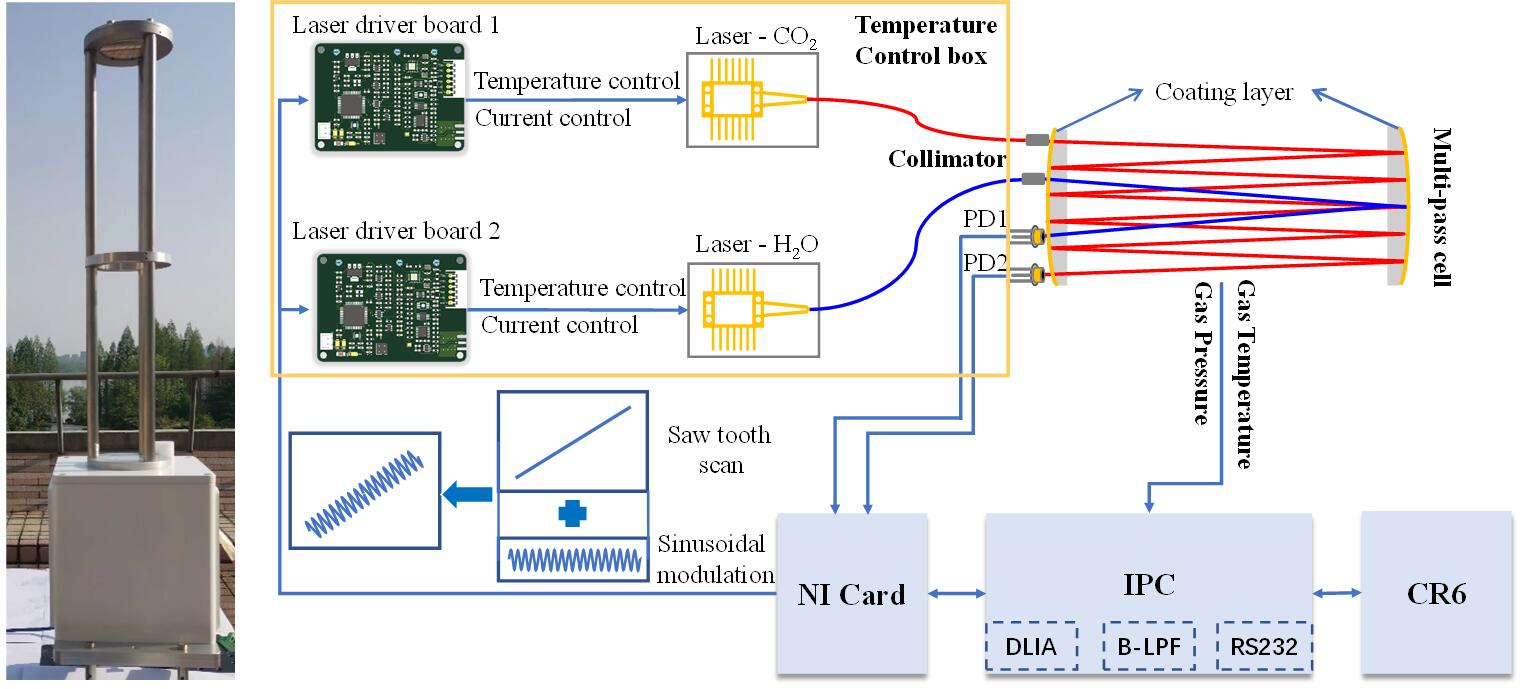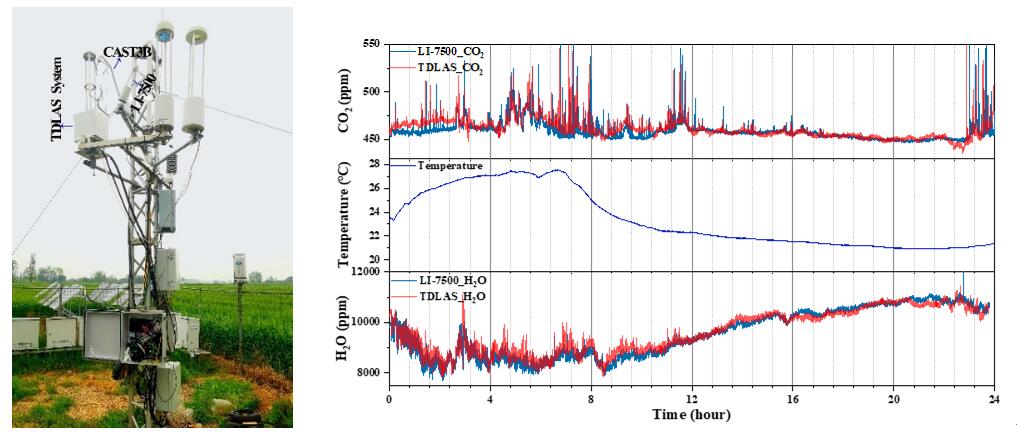
According to a research recently published in Optics Express, a research team from Anhui Institute of Optics and Fine Mechanics, Hefei Institutes of Physical Science of Chinese Academy of Sciences proposed a new design for online measurement of atmospheric H2O and CO2 fluxes.
"We designed an open-path and anti-pollution multi-pass cell," said Professor GAO Xiaoming, who led the team, "and applied it on tunable diode laser absorption spectroscopy (TDLAS) sensor."
The new gas analysis instrument exhibited good consistency with commercial instruments, and its accuracy was comparable.
One of the most important ways to reduce greenhouse gas concentrations is by storing carbon in soil and vegetation. Scientists proposes to use the turbulent eddies generated by air flow to measure the emission of greenhouse gases. Equipment based on tunable laser absorption spectroscopy combined with eddy covariance technology has many advantages including high sensitivity, high precision, and fast response. There are two gas path methods for measuring gas fluxes: open-path and closed path. However, the traditional open-path multi-pass cell is unsuitable because its optical path is exposed to air, which causes the coating layer of the lens to be corroded in the atmosphere.
Different from traditional multi-pass cells, this novel anti-pollution open-path multi-pass cell was mainly composed of two plano-convex mirrors coated on a convex surface.
"It's coated on the reverse side," explained GAO. "The design does not allow a direct contact between the coating layer of the lens and air, and that's why it has the anti-pollution effect."
This design effectively avoided the pollution and corrosion of the lens film layer by the external environment. When it was applied to the flux monitoring equipment of atmospheric greenhouse gases CO2 and H2O, the long-term stability and durability of the open-path system was improved.
The design was further proved in a field comparative observation experiment on the CO2 and H2O fluxes of the wheat seasonal farmland ecosystem. The results were in good agreement with those achieved using the Non-dispersive infrared (NDIR)-based commercial instrument.
"We see strong application prospects for flux measurements in any ecosystem," said GAO.
This work was supported by the National Key Research and Development Program the National Natural Science Foundation of China.

Fig. 1. Photograph of the TDLAS sensor and schematic of the open-path TDLAS system used for measuring atmospheric H2O and CO2 concentrations. (Image by GU Mingsi)

Fig. 2. Photograph of the installation and comparison of the field measurements obtained using TDLAS and LI-7500 for 24 h. (Image by GU Mingsi)

Fig. 3. Comparison of (a) CO2 flux and (b) H2O flux for approximately a month. (Image by GU Mingsi)

Reseachers were setting up self-made instrument for comparative observation experiment. (Image by GU Mingsi)